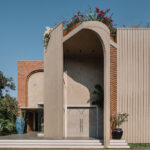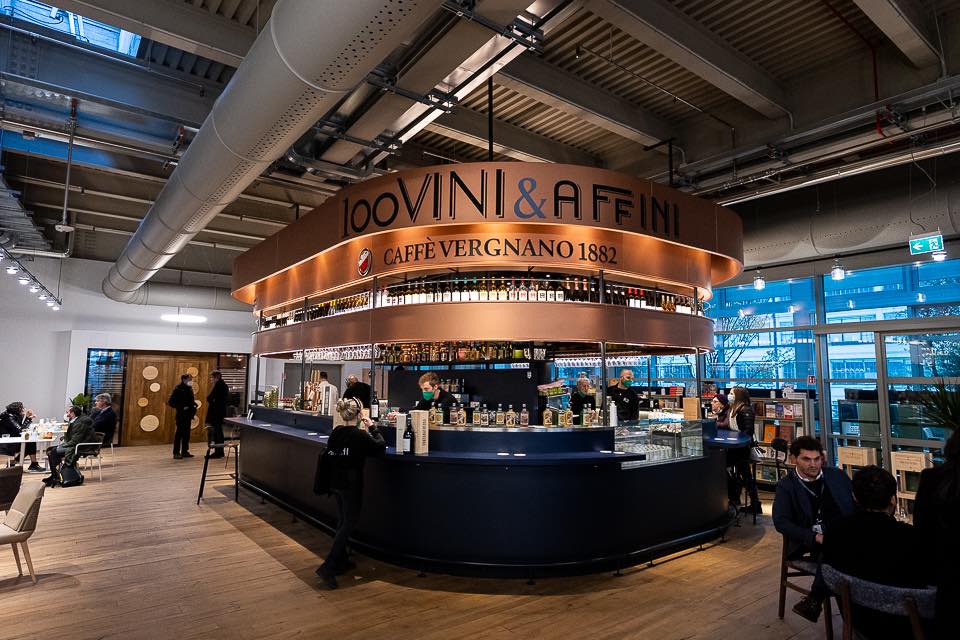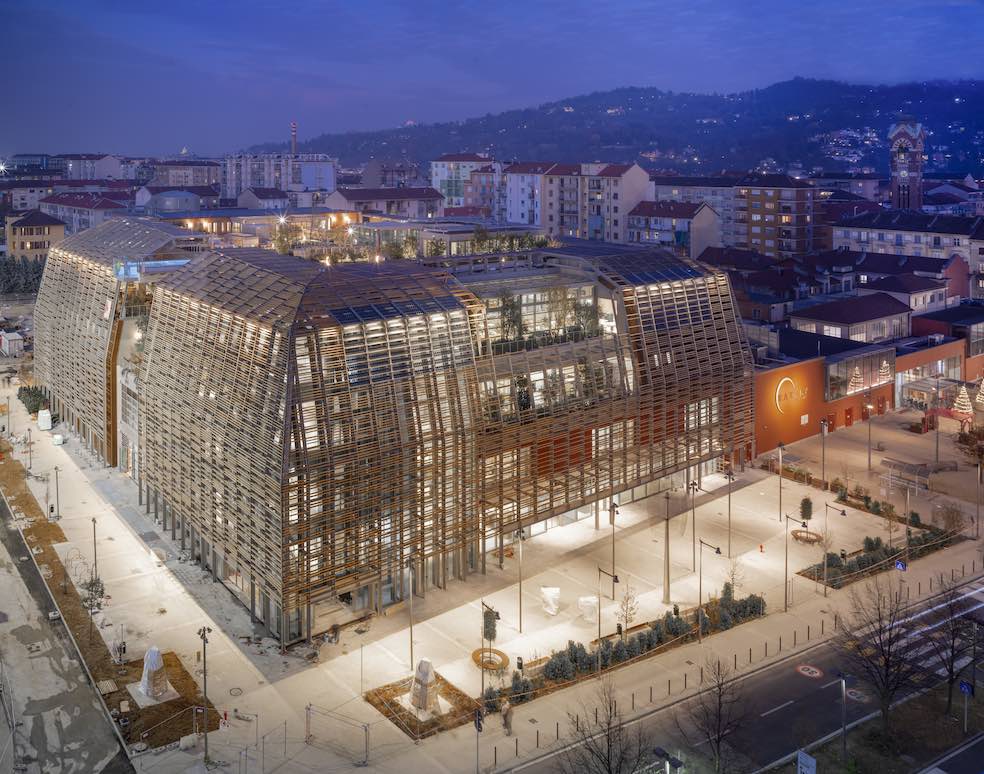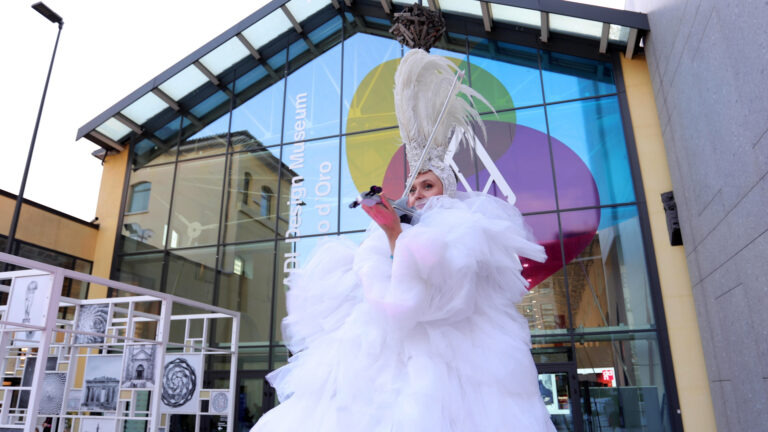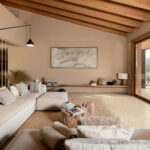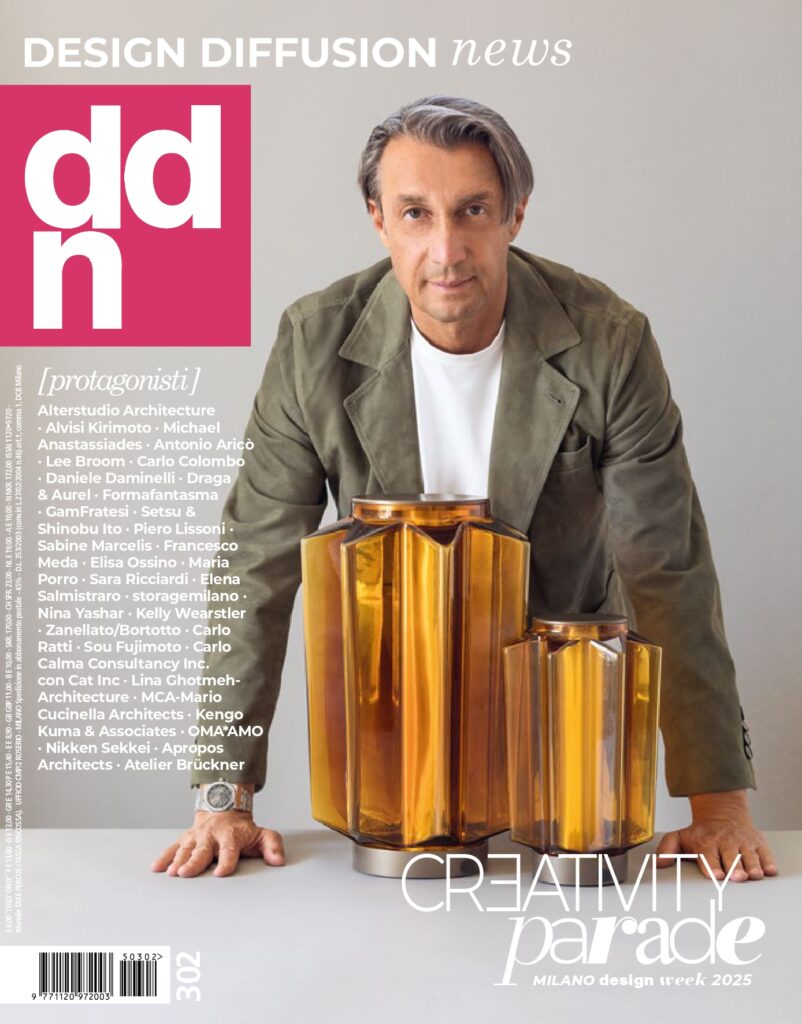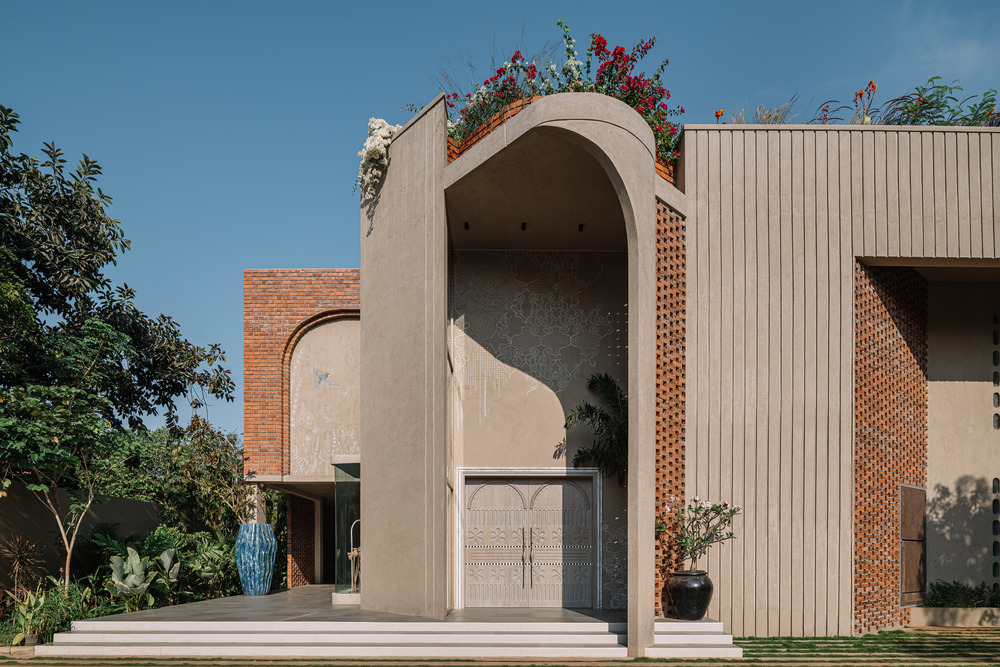Oscar Farinetti’s new project is called Green Pea and is a “shopping mall” based on sustainability
A sustainable building, sustainable products and manufacturers: this is the philosophy of Green Pea, the new project by Oscar Farinetti, who founded Eataly in 2007. As Farinetti explains, thinking of zero consumption is utopian, unfortunately. It is, therefore, necessary to reshape production and trade in order to find a new balance in our activities. A balance that will allow us to make our consumption compatible with the environment that surrounds us.
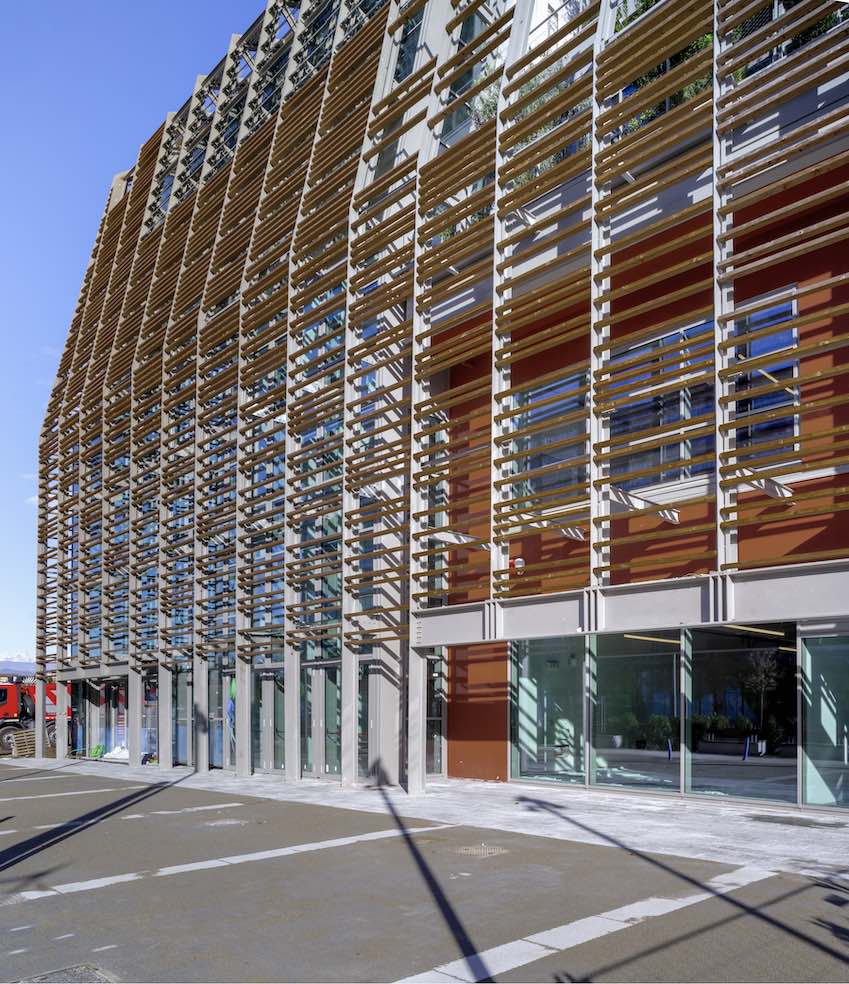
Green Pea is a new concept of shopping mall covering 15,000 square meters, where there are not only products for sale. Among the partners of Green Pea are also energy and technology companies, which redesign a new way of experiencing public and commercial spaces. Moreover, being true to its philosophy, Green Pea also hosts several startups, offering innovative services and products. The first Green Pea in the world is located in Turin, in the Lingotto area, next to Eataly.
Five floors of Made in Italy excellence
Retail space is organized into 5 floors, each with a different theme. The ground floor, where the entrance is located, hosts the main partner FCA, Iren, Enel X, the Iride natural laundry, the Green Pea Discovery Museum. The first floor is dedicated to furniture, hosting over 40 top Made in Italy companies, with products for the living area, furniture, lighting, kitchens and appliances.
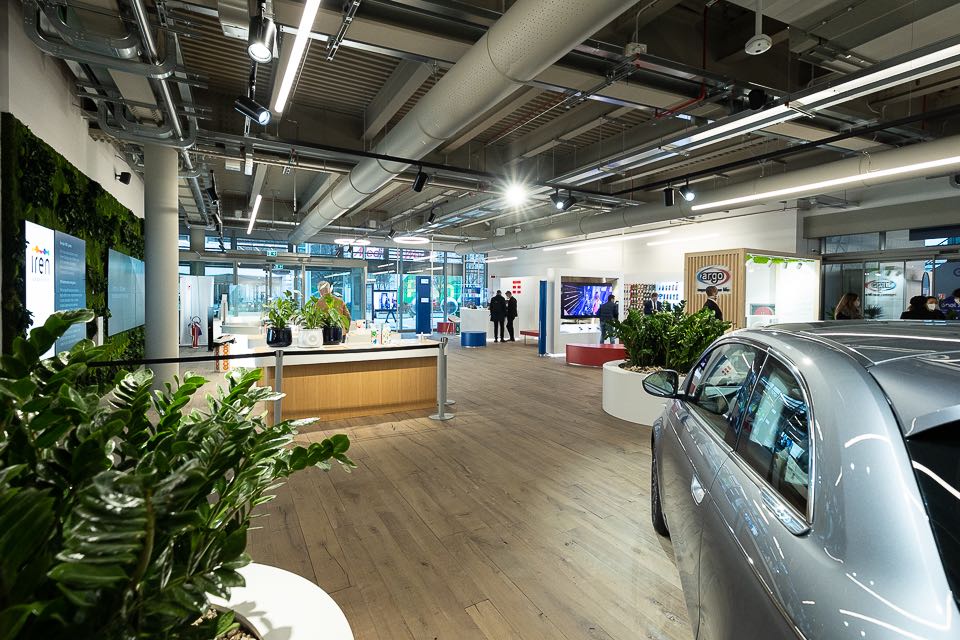
Of course, Made in Italy also means fashion, that’s why the second floor is dedicated to clothing and accessories, with brands that have embraced the values of sustainability and respect for the environment. Not only well-known brands with a long history, such as Borbonese, Timberland, North Sails, Orciani, but also tailors of the future such as Igoodi, and new startups born specifically to recycle and reuse the existing.
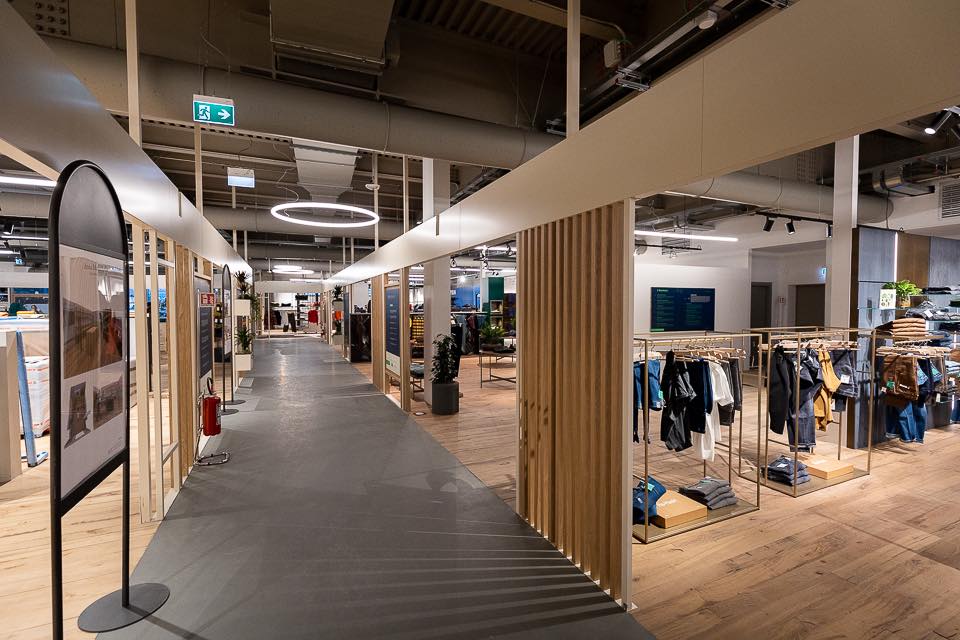
Beauty, excellence and restaurants on the third floor, with important made in Italy brands – Ermenegildo Zegna, Herno, Brunello Cucinelli and SEASE – cosmetics, books and culture. Not only good food and good wine at the 100 Vini e Affini bistro, in collaboration with Fontanafredda anf Affini. There is also a starred restaurant, Casa Vicina, run by the family. The top floor, the fourth, is the realm of idleness. It hosts the Otium Pea Club, equipped with a spa and a breathtaking infinity pool overlooking industrial buildings and the Alpine arc in the background.

Furniture and Green Pea
As already mentioned, the new Green Retail Park has an entire floor dedicated to furniture and lighting, with the best made in Italy brands. The companies that have decided to take part in the project, under the guidance of the Home Brand Director Pierangelo De Poli, are among the most representative of made in Italy design, whose production and raw materials supply are certified as sustainable.
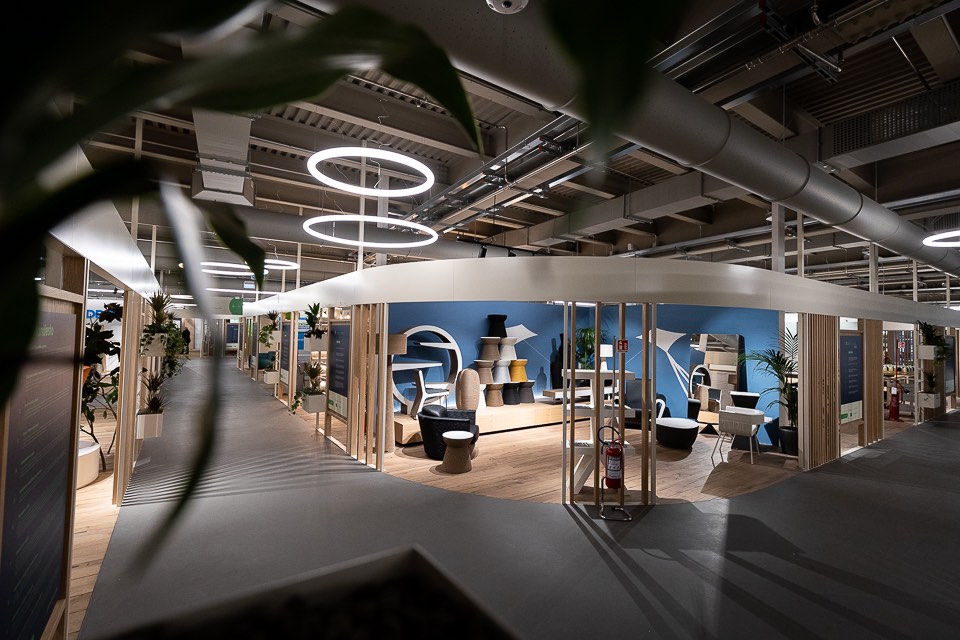
The area dedicated to the kitchen and appliances hosts Valcucine, Franke, Whirlpool, Falmec, Kitchenaid. It is worth mentioning that, among the kitchens, that there are also Green Pea products, designed for this mall.
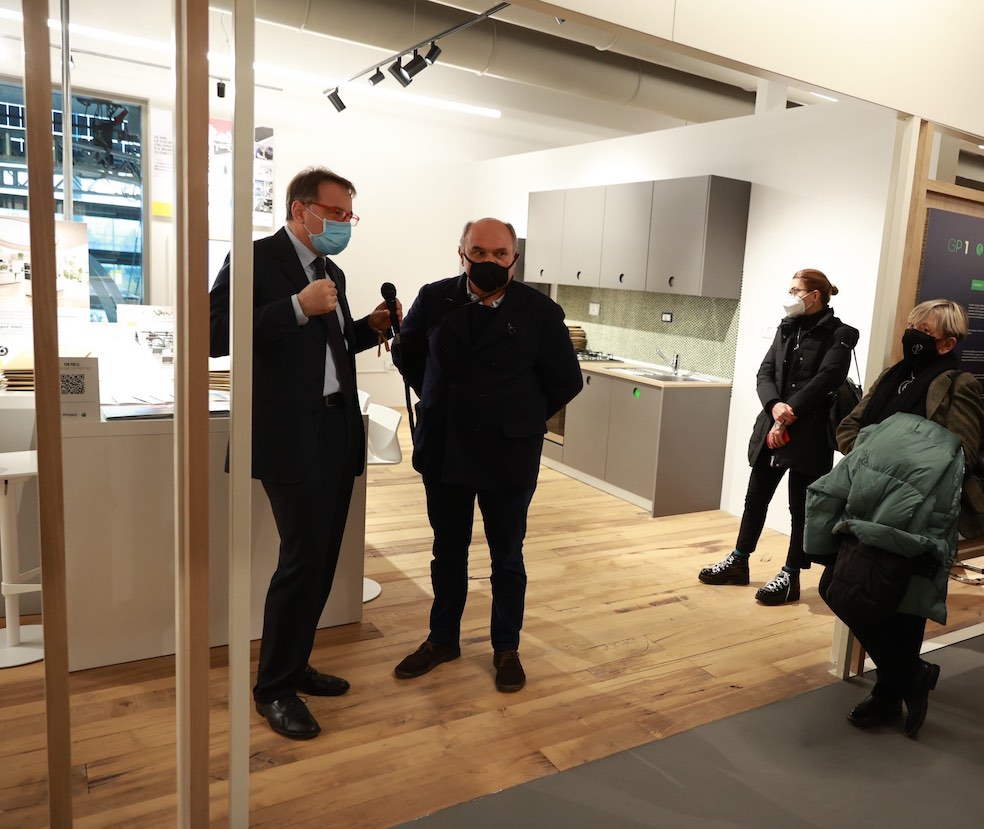
Living areas include wood furniture by Riva 1920, a pioneer of sustainable interior design. Its products are made of various types of solid wood, including fossil wood from New Zealand. We also find upholstered furniture by Vibieffe, outdoor furniture by Gervasoni and Roda, and living area concepts by Pianca, which, for the occasion, launches a new armchair, Galatea, a new design by Cristina Celestino.
Discover Pianca & Partners showroom in Milan
Sustainable furniture materials
The pursuit of sustainability in interior design entails selecting different materials and production processes. They range from Fiam’s glass to the environmentally-friendly plastic by Scab Design, up to the cardboard made by Stay Green, which built the bookcases of the Beauty area, on the third floor.
Read our interview with Maurizio Riva, Riva 1920
There are several partners also for lighting. Artemide has provided different lights, such as Discovery, by Ernesto Gismondi, on the vertical part of the entrance. iGuzzini has set up a room to experiment with the effects of various types of lighting, Light Experience, the only one open to the public in Italy. Many other brands – 40 famous and international companies – have believed in the project.
Finally, also the Saviola Group, the top Italian company for the production of 100% recycled wooden panels, is present at Green Pea, with the installation of the “Re-generator”, Saviola’s symbol of the collection and recycling system, and a graphic panel in the Green Pea Discovery Museum, showing numbers, history and values related to the results achieved by the Group in recent years.

Green Pea: a sustainable building
The project of the building was developed by ACC Naturale Architettura Cristiana Catino and Negozio Blu Architetti (Ambrosini, Gatti, Grometto). The envelope is formed by a double layer of surfaces: an outer shell of wooden sunshade slats, and an inner shell, consisting of an infill of solid wood sandwich panels. Slats are heat-treated for outdoor use and stiffened by a metal core, forming a filter that allows the building to breathe and protects it from the sun. Sunshades are made of fir wood reclaimed from the forests of Val di Fiemme and Belluno destroyed by the storm of October 2018. The internal panels are insulated with wood fiber and covered with metal sheet. Another sustainable feature is represented by the load-bearing structure, made of steel, entirely dry-assembled with bolts to be easily disassembled and removed at the end of its life.
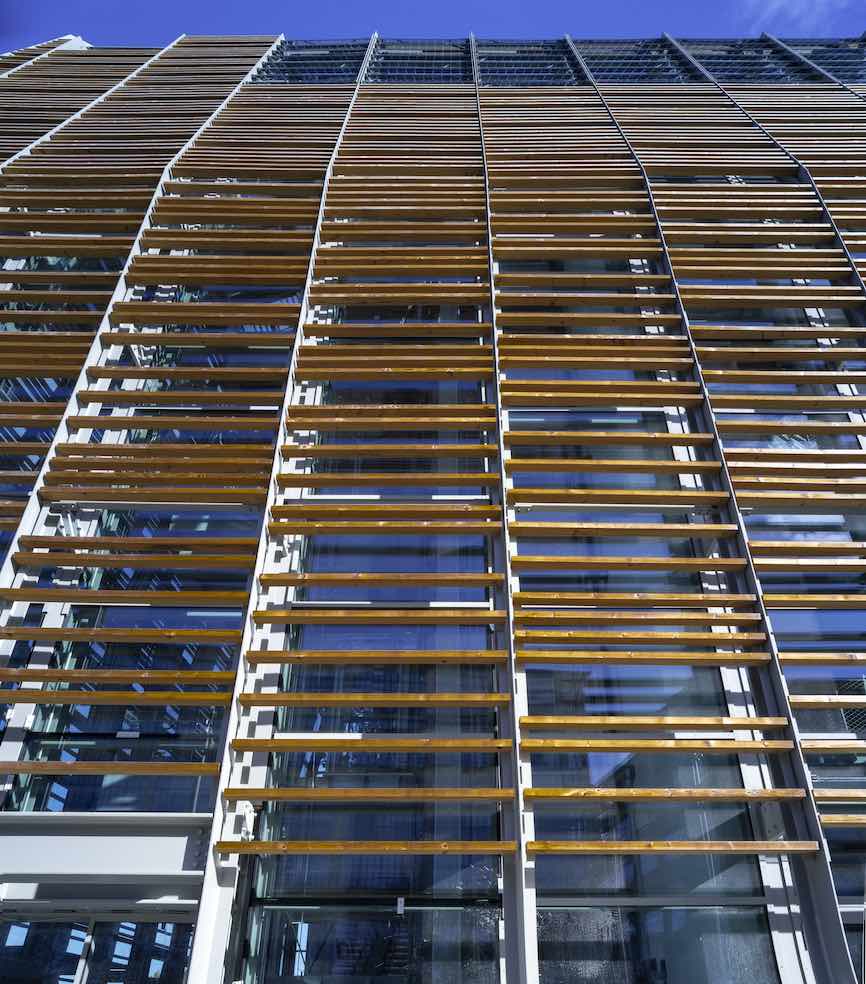
The interior spaces are characterized by flexibility, with environments that allow to design simple and immediate paths. Parquet floors are made with wood reclaimed along the river beds of the Varaita valley. Wall painting neutralizes pollutants, prevents the growth of mold and microbes and eliminates germs for a healthier environment – as befits a sustainable building.




